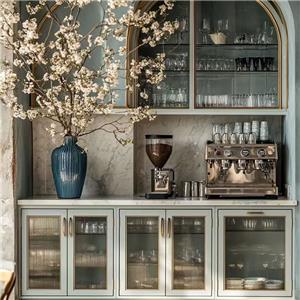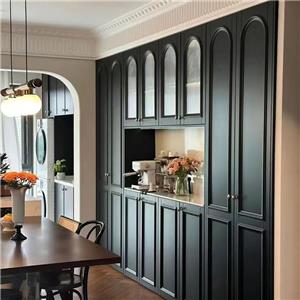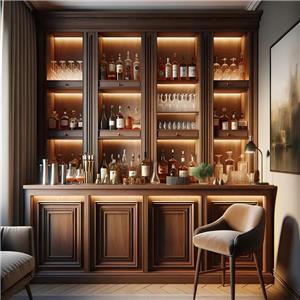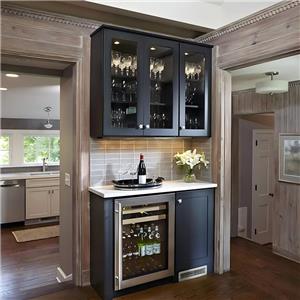What are traditional kitchen cabinets?
Traditional kitchen cabinets are an enduring choice in home design, and are loved by families around the world for their classic aesthetics, rich decorative details, and durable practicality. Unlike modern or minimalist cabinets, traditional style emphasizes delicate craftsmanship and decorative elements, and often combines the essence of historical culture, family heritage, and classical aesthetics.
This article will explore in detail what traditional kitchen cabinets are, analyze their main features, common materials, and design elements, and help readers better understand and apply this classic design style.
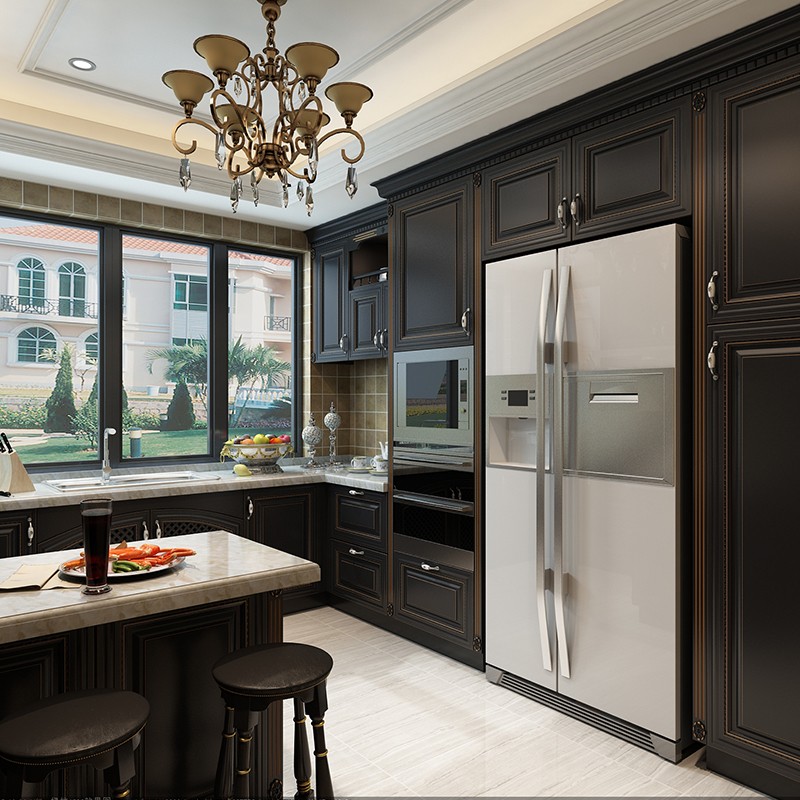
What are traditional kitchen cabinets?
Traditional kitchen cabinets generally refer to those types of cabinets that are based on classical aesthetics, use classic design elements, and incorporate traditional craftsmanship. This style of cabinets usually has complex carvings, inlays, and decorative lines, reflecting a high level of attention to detail. Compared with modern minimalist cabinets, traditional cabinets pay more attention to texture and visual richness, creating a warm, stable, and elegant home atmosphere.
Traditional kitchen cabinets are not a single design style, but a broad concept covering a variety of classical styles. It can include a variety of classical home styles such as English country style, French pastoral style, and Victorian style. Regardless of the specific style, traditional style cabinets have some common design features that make them visually and functionally outstanding.
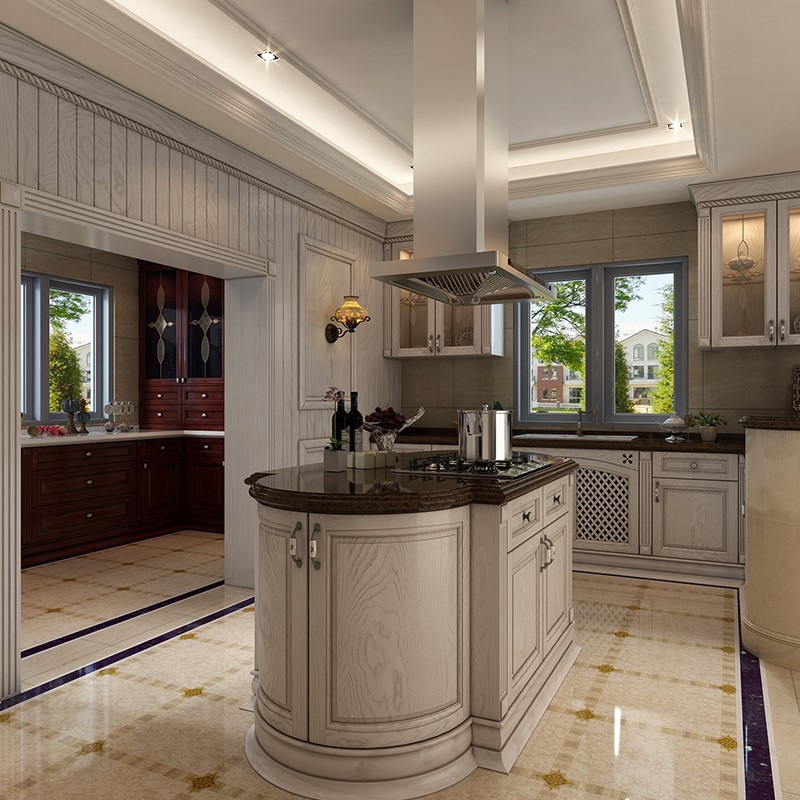
What are the main features of traditional style kitchen cabinets?
Complex decorative details
A notable feature of traditional style kitchen cabinets is their complex decorative details. These decorative details usually include carved patterns, inlay craftsmanship, decorative lines and reliefs. These elements not only increase the beauty of the cabinets, but also reflect the exquisite craftsmanship of traditional craftsmanship. For example, carvings on door panels, decorative lines on the edges of cabinets, and metal handles on drawers are all common decorative elements in traditional style cabinets.
These decorative details are usually arranged in a symmetrical manner to form a harmonious and unified visual effect. This symmetry and unity are important features of traditional style cabinets, making the entire kitchen space appear more stable and coordinated.
Rich material selection
Traditional style kitchen cabinets usually use high-quality natural materials, which are not only durable but also bring rich texture and color. Common materials include solid wood, stone, tiles and metal accessories.
●Solid wood: Solid wood is the most commonly used material for traditional style cabinets, especially precious woods such as oak, cherry, and walnut. These woods are not only hard, but also have rich textures and natural colors, which can add a natural beauty to the cabinets.
●Stone: Natural stones such as marble and granite are often used for countertops and floors in traditional kitchens. These stones are not only durable, but their unique texture and luster can enhance the overall texture of the kitchen.
●Ceramic tiles: Ceramic tiles are often used for wall and floor decoration in traditional kitchens. Handmade tiles, glazed tiles and other tiles with rich patterns and colors can add a classical beauty to the kitchen.
●Metal accessories: Metal accessories such as handles and hinges of traditional cabinets are usually made of copper, iron and other materials, and are specially treated to present an antique effect. These metal accessories are not only practical, but also add a sense of history to the cabinets.
Soft color matching
The color matching of traditional kitchen cabinets is usually soft, mainly warm colors. Common colors include beige, cream, light yellow, brown and dark red. These colors can not only create a warm atmosphere, but also complement other traditional decorative elements such as carpets, curtains and wallpaper.
In addition, the color matching between the door panels and countertops of traditional style cabinets is also very particular. Usually, countertop colors that are similar to or slightly darker than the cabinet color are selected to form a sense of hierarchy. For example, cream cabinets can be matched with light marble countertops, while dark brown cabinets are suitable for dark granite countertops.
Classic door panel design
The door panel design of traditional style kitchen cabinets is usually very classic and iconic. Common door panel designs include arched door panels, polished door panels, embedded door panels, etc. These designs are not only beautiful, but also very practical.
● Arched door panels: Arched door panels are one of the most representative designs in traditional style cabinets. The arched design not only increases the three-dimensional sense of the door panel, but also adds a touch of elegance to the cabinet.
● Polished door panels: The surface of polished door panels is smooth, usually with a slight gloss. This design is often used in more formal traditional kitchens and can enhance the overall style of the kitchen.
● Embedded door panels: Embedded door panels refer to door panels embedded in the cabinet frame, making the cabinet appearance more flat and unified. This design is very classic and practical, and is often used in various traditional style kitchens.
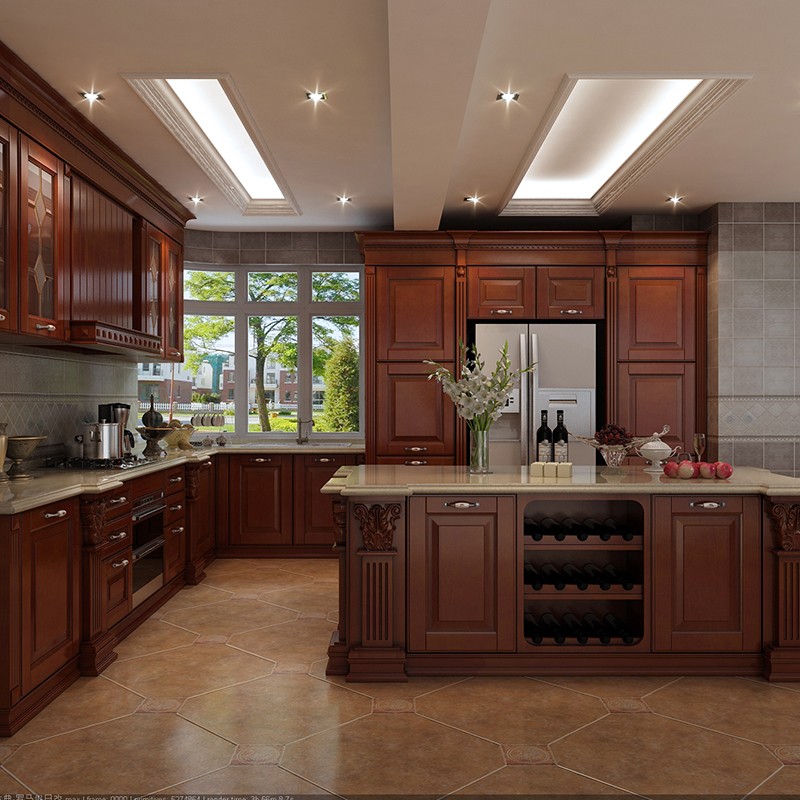
What are the common design elements of traditional kitchen cabinets?
Kitchen island
Kitchen islands are a very common design element in traditional kitchens. The island not only increases the workspace in the kitchen, but also serves as a center for family members to gather and socialize. Traditional kitchen islands are usually made of solid wood or stone, and the surface is often decorated with carvings or inlaid patterns. In addition, there are usually exquisite chandeliers hanging above the island to increase the overall beauty.
Glass cabinet doors
Glass cabinet doors are a classic design element in traditional kitchen cabinets. Transparent or translucent glass doors can not only display the tableware and decorations in the cabinets, but also increase the layering of the kitchen. Glass doors are often decorated with carvings or lead strips to enhance the visual effect of traditional style.
Open storage racks
Open storage racks are an important design element in traditional kitchens. Unlike the hidden storage in modern kitchens, traditional kitchens often display daily necessities such as pots, pans, and spice jars. Open storage racks are usually placed above the wall and use the same materials and decorations as the cabinets to maintain the unity of the overall style.
Arched decoration
Arched decoration is one of the common design elements in traditional style kitchen cabinets. Whether in the door panel design, on the top of the cabinet or on the kitchen rack, the arched element adds a sense of elegance to the kitchen. Especially in larger kitchen spaces, arched decoration can effectively break the monotony of the space and increase visual interest.
Lace and decorative lines
Lace and decorative lines are indispensable decorative elements in traditional style cabinets. These lines usually appear in cabinet door panels, drawer edges and cabinet feet. The exquisite lace and complex line design not only increase the decorativeness of the cabinet, but also bring a delicate and elegant feeling to the entire kitchen space.

What are the suitable families for traditional style kitchen cabinets?
Traditional style kitchen cabinets are suitable for families who love classical aesthetics and like rich decoration and details. It is not only suitable for large kitchens, but can also be applied to smaller kitchens through reasonable design. Especially for those who have family heritage and like nostalgic style, traditional style cabinets are undoubtedly the best choice.
In addition, traditional style cabinets are also suitable for families who pay attention to quality and pursue long-term durability. Thanks to the use of high-quality natural materials and exquisite craftsmanship, this cabinet is not only beautiful but also very durable. It can accompany the family for many years and even be passed down to the next generation.

